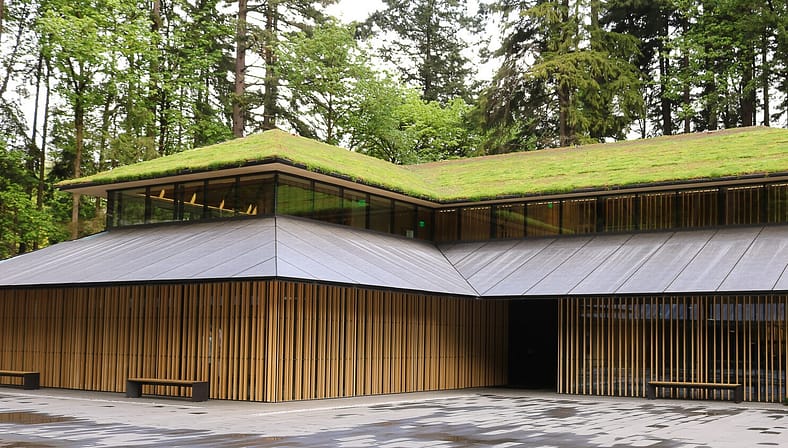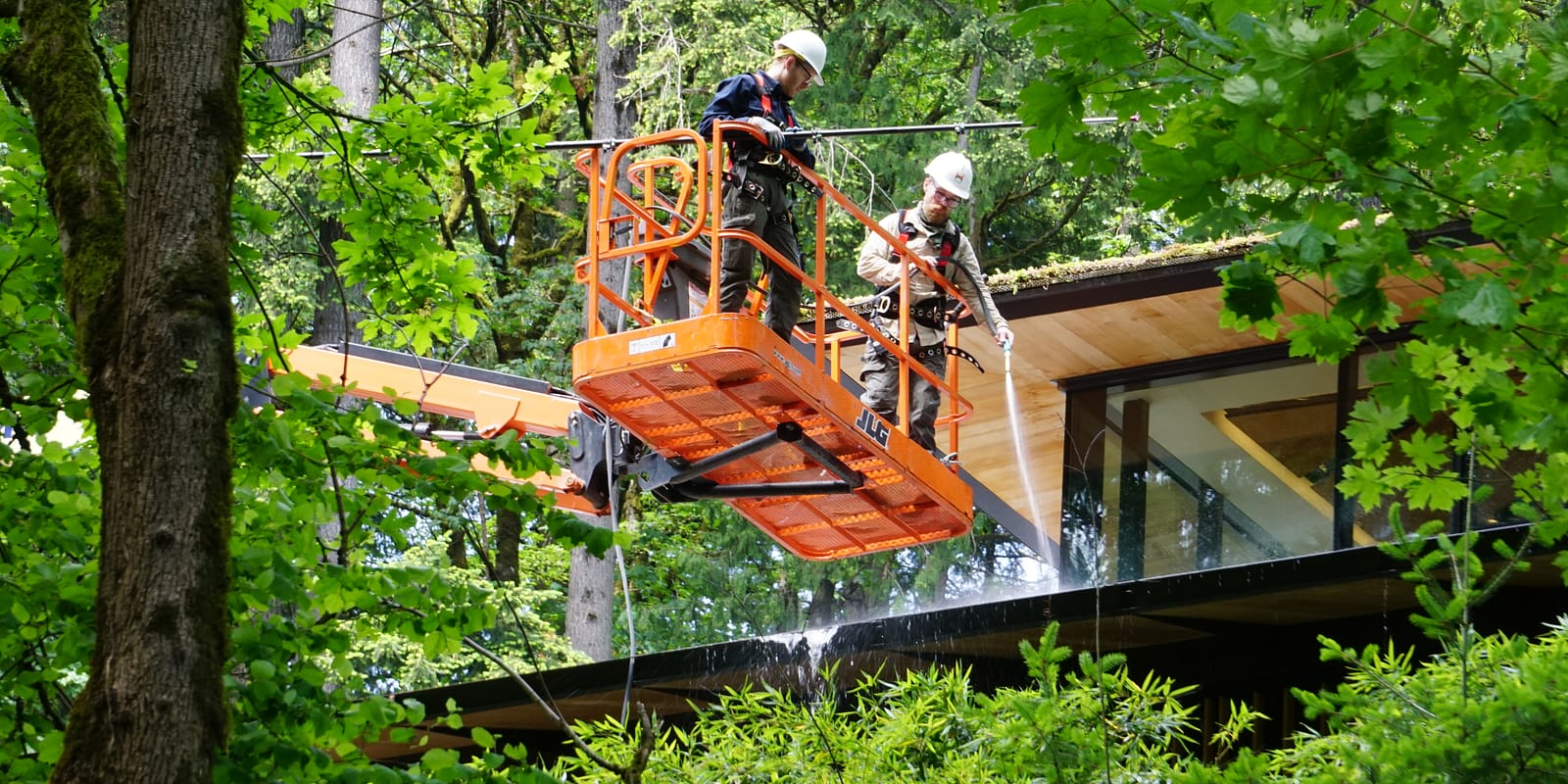Because of the tireless and dedicated work of its volunteers and staff, Portland Japanese Garden looks like a living, breathing piece of art. This careful attention is not just spent on bonsai, koi ponds, or art exhibitions, but also on the more subtle features of the Garden such as the metal roofs of the Kengo Kuma-designed buildings in the Cultural Village.
Made of aluminum, these metal roofs have two layers. One is a thicker aluminum stock, the other a thinner veneer layer with printed textures that look as though they were burnished by hand. As with many things, it takes a village of Portland Japanese Garden staff working closely together to maintain the beauty and harmony of the Garden. While the gardeners maintain the green sedum planted into the upper roofs of the Ron and Jenny Herman Garden House and Jordan Schnitzer Japanese Arts Learning Center, it is the facilities team that maintains the metal roofing on these buildings, as well as the Umami Café.

Approximately three times a year these roofs must be cleaned, “Because of the various environmental debris, such as pine needles, leaves, pollen, sedum drippings, or random dirt,” said Portland Japanese Garden Director of Facilities and IT, Jason Sipe. “We need to clean off the cold-rolled aluminum panels so they don’t stain or develop too much of a dirty patina.”
Hiring: We are currently looking to fill a Facilities Technician position, click here to learn more!
However, tidying up the metal roofs is not a simple matter. “The [Cultural Village] roofs are very delicate,” Sipe noted. “The surface on top of the aluminum is not easily scrubbed in a traditional sense because it can ruin the finish, so we have to be very gentle with them.” Aside from careful human touch, an array of different tools, both manual and powered, are deployed in spaces that are often narrow and only feet away from hillsides and stairs.

“We clean the upper buildings using a sixty-foot articulate boom lift, because accessing them otherwise is very difficult to do safely,” Sipe shared. “Our facilities team, Greg Ballard and Jon Baker, have been trained to become certified lift operators and know how to use their safety harnesses.”
Ballard and Baker, perched in their boom lift on a thankfully sunny day, then methodically sprayed a high-pressure hose at the roofs while simultaneously using a long-handled scrub brush to push away debris. It was painstaking work that took hours. “These guys are unsung heroes in keeping the Garden look world class,” Sipe affirmed.

The roofs of the buildings in the Cultural Village are not the only ones this team maintains. Within the historic garden spaces, different techniques are required. “The roofs out in the Garden are baked clay and one of a kind, so they need to be handled with kid gloves,” Sipe noted.
Many of the roofs within the Garden are comprised of tiles made in Japan—for instance, the tiles on the Nezu Gate were hand-made in Japan and consist of twelve different shapes. Because the Garden’s paths are not as accommodating to the boom lift, the Facilities Department instead ascends by way of ladder, bringing hoses and brushes up with them.

